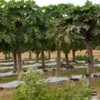 With the recent spike in papaya prices due to phytosanitary restrictions on papayas from Mexico, many growers in South Florida are considering getting back into papaya production to target the ripe papaya market. Still, there are a lot of concerns as to whether the crop can be profitable in light of declining yields. Based on this discussion, the objective of this article is to provide needed information on the costs and returns associated with establishing and operating a five-acre papaya orchard in South Florida, and to assess the prices and yields that must be obtained to make a papaya orchard profitable. This 5-page fact sheet was written by Edward A. Evans, Fredy H. Ballen, and Jonathan H. Crane, and published by the UF Department of Food and Resource Economics, December 2012.
With the recent spike in papaya prices due to phytosanitary restrictions on papayas from Mexico, many growers in South Florida are considering getting back into papaya production to target the ripe papaya market. Still, there are a lot of concerns as to whether the crop can be profitable in light of declining yields. Based on this discussion, the objective of this article is to provide needed information on the costs and returns associated with establishing and operating a five-acre papaya orchard in South Florida, and to assess the prices and yields that must be obtained to make a papaya orchard profitable. This 5-page fact sheet was written by Edward A. Evans, Fredy H. Ballen, and Jonathan H. Crane, and published by the UF Department of Food and Resource Economics, December 2012.
http://edis.ifas.ufl.edu/fe918
Tag: Food and Resource Economics Department
Evolution of Citrus Disease Management Programs and Their Economic Implications: The Case of Florida's Citrus Industry (FE915)
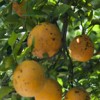 Managing new exotic endemic diseases is very costly, and it is imperative that state and federal governments focus on preventing the introduction of other diseases such as citrus variegataed cholorosis and citrus leprosis virus. This 6-page fact sheet focuses on the expanded costs of managing exotic citrus diseases as they become endemic or established within a citrus industry. Written by Ronald P. Muraro, and published by the UF Department of Food and Resource Economics, October 2012.
Managing new exotic endemic diseases is very costly, and it is imperative that state and federal governments focus on preventing the introduction of other diseases such as citrus variegataed cholorosis and citrus leprosis virus. This 6-page fact sheet focuses on the expanded costs of managing exotic citrus diseases as they become endemic or established within a citrus industry. Written by Ronald P. Muraro, and published by the UF Department of Food and Resource Economics, October 2012.
http://edis.ifas.ufl.edu/fe915
Una mirada a la produccion, el comercio y el consumo de papaya a nivel mundial (FE917)
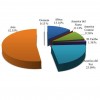 Este artículo provee información referente a las tendencias globales en cuanto a producción, comercio mundial y los países exportadores e importadores de papaya. Written by Edward A. Evans and Fredy H. Ballen, and published by the UF Department of Food and Resource Economics, October 2012.
Este artículo provee información referente a las tendencias globales en cuanto a producción, comercio mundial y los países exportadores e importadores de papaya. Written by Edward A. Evans and Fredy H. Ballen, and published by the UF Department of Food and Resource Economics, October 2012.
http://edis.ifas.ufl.edu/fe917
The Economic Impact of the 2011 Florida BASS Federation Tournament to Osceola County and the Event's Economic Value to Participants (FE916)
 The Florida BASS Federation Nation is a chapter of a national organization whose goal is to stimulate public awareness of bass fishing as a major participant sport. Each the state Championship tournament attracts anglers to a competitive event in which participants seek to catch the largest cumulative weight of bass over two days. This article describes an assessment of the economic impact in Osceola County associated with the State Championship tournament. Findings from this analysis should help planners and other stakeholders of similar tournaments better estimate the economic benefits associated with such community activities. This 9-page fact sheet was written by Sherry Larkin, Jessica Georges, Alan Hodges, Michael Allen, and Dale Jones, and published by the UF Department of Food and Resource Economics, October 2012.
The Florida BASS Federation Nation is a chapter of a national organization whose goal is to stimulate public awareness of bass fishing as a major participant sport. Each the state Championship tournament attracts anglers to a competitive event in which participants seek to catch the largest cumulative weight of bass over two days. This article describes an assessment of the economic impact in Osceola County associated with the State Championship tournament. Findings from this analysis should help planners and other stakeholders of similar tournaments better estimate the economic benefits associated with such community activities. This 9-page fact sheet was written by Sherry Larkin, Jessica Georges, Alan Hodges, Michael Allen, and Dale Jones, and published by the UF Department of Food and Resource Economics, October 2012.
http://edis.ifas.ufl.edu/fe916
2012 Florida Constitutional Amendments series
 In addition to 2012 being a presidential election year, Florida voters also will be asked to vote on a number of proposed amendments to their state constitution. Many voters remain either unaware or less informed regarding the effects and impacts of the proposed constitutional amendments. This series of 6 fact sheets was written by Rodney L. Clouser, and published by the UF Department of Food and Resource Economics, July 2012.
In addition to 2012 being a presidential election year, Florida voters also will be asked to vote on a number of proposed amendments to their state constitution. Many voters remain either unaware or less informed regarding the effects and impacts of the proposed constitutional amendments. This series of 6 fact sheets was written by Rodney L. Clouser, and published by the UF Department of Food and Resource Economics, July 2012.
- Amendment 2: Veterans Disabled Due to Combat Injury; Homestead Property Tax Discount
- Amendment 3: State Government Revenue Limitation
- Amendment 4: Property Tax Limitations; Property Value Decline; Reduction for Nonhomestead Assessment Increases, Delay of Scheduled Repeal
- Amendment 9: Homestead Property Tax Exemption for Surviving Spouse of Military Veteran or First Responder
- Amendment 10: Tangible Personal Property Tax Exemption
- Amendment 11: Additional Homestead Exemption; Low-Income Seniors Who Maintain Long-Term Residency on Property; Equal to Assessed Value
http://edis.ifas.ufl.edu/topic_2012_florida_constitutional_amendments
An Overview of US Papaya Production, Trade, and Consumption (FE914)
![fe914 Figure 1. US fresh papaya imports by origin, 2002–2011 (metric tonnes [t]). Source: USDA/FAS (2012).](http://edis-news.ifas.ufl.edu/wp-content/uploads/2012/09/fe914-100x100.jpg) The United States produces close to 14,000 t of papaya annually. Consumption of the fruit is on the upswing and the development of new cultivars tolerant to the Papaya Ring Spot Virus encourage many growers in South Florida to taking a second look at producing papaya for the domestic market. This 8-page fact sheet provides information on domestic trends in the production and trade of fresh papaya in the U.S. Also included is a price analysis at the wholesale level for representative markets on the US East and West Coasts. Written by Edward A. Evans, Fredy H. Ballen, and Jonathan H. Crane, and published by the UF Department of Food and Resource Economics, September 2012.
The United States produces close to 14,000 t of papaya annually. Consumption of the fruit is on the upswing and the development of new cultivars tolerant to the Papaya Ring Spot Virus encourage many growers in South Florida to taking a second look at producing papaya for the domestic market. This 8-page fact sheet provides information on domestic trends in the production and trade of fresh papaya in the U.S. Also included is a price analysis at the wholesale level for representative markets on the US East and West Coasts. Written by Edward A. Evans, Fredy H. Ballen, and Jonathan H. Crane, and published by the UF Department of Food and Resource Economics, September 2012.
http://edis.ifas.ufl.edu/fe914
An Overview of Global Papaya Production, Trade, and Consumption (FE913)
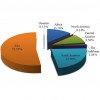 The market demand for tropical fruits has been growing steadily over the past two decades. Global papaya production has grown significantly over the last few years, mainly as a result of increased production in India. Papaya has become an important agricultural export for developing countries, where export revenues of the fruit provide a livelihood for thousands of people, especially in Asia and Latin America. Papaya exports contribute to the growing supply of healthy food products on international markets. The top three exporting countries accounted for 63.28 percent of the total global exports of papaya between 2007 and 2009, with more than half of those exports going to the United States. This 7-page fact sheet provides information on global trends in the production and trade of papaya. An overview of the current and future trends of global papaya production and trade, and the main papaya exporting and importing countries is presented herewith. Written by Edward A. Evans and Fredy H. Ballen, and published by the UF Department of Food and Resource Economics, September 2012.
The market demand for tropical fruits has been growing steadily over the past two decades. Global papaya production has grown significantly over the last few years, mainly as a result of increased production in India. Papaya has become an important agricultural export for developing countries, where export revenues of the fruit provide a livelihood for thousands of people, especially in Asia and Latin America. Papaya exports contribute to the growing supply of healthy food products on international markets. The top three exporting countries accounted for 63.28 percent of the total global exports of papaya between 2007 and 2009, with more than half of those exports going to the United States. This 7-page fact sheet provides information on global trends in the production and trade of papaya. An overview of the current and future trends of global papaya production and trade, and the main papaya exporting and importing countries is presented herewith. Written by Edward A. Evans and Fredy H. Ballen, and published by the UF Department of Food and Resource Economics, September 2012.
http://edis.ifas.ufl.edu/fe913
Economic Contributions of Agriculture, Natural Resources, and Related Industries in Florida for 2010 (FE906)
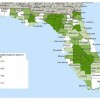 Agriculture, natural resources, and related industries remain a significant force in the economy of Florida, and it is important to recognize their economic contributions for informed public policy. The economic contributions of these industries were evaluated for 2010 to update previous reports and provide further information on economic trends in the wake of the historic global recession of 2007–2009. This 27-page report was written by Alan W. Hodges, Mohammad Rahmani, and Thomas J. Stevens, and published by the UF Department of Food and Resource Economics, August 2012.
Agriculture, natural resources, and related industries remain a significant force in the economy of Florida, and it is important to recognize their economic contributions for informed public policy. The economic contributions of these industries were evaluated for 2010 to update previous reports and provide further information on economic trends in the wake of the historic global recession of 2007–2009. This 27-page report was written by Alan W. Hodges, Mohammad Rahmani, and Thomas J. Stevens, and published by the UF Department of Food and Resource Economics, August 2012.
http://edis.ifas.ufl.edu/fe906
US/Colombia Free Trade Agreement: What Is in It for Florida Agriculture? (FE905)
 On October 12, 2011, the US Congress ratified a Free Trade Agreement/Trade Promotion Agreement (FTA) with Colombia, five years after it was signed by President George W. Bush. The FTA took effect in May of 2012. This 13-page fact sheet highlights the key elements of the US Colombia FTA as they relate to trade in agricultural commodities, and to examine what is at stake for Florida. Written by Edward A. Evans and Fredy H. Ballen, and published by the UF Department of Food and Resource Economics, July 2012.
On October 12, 2011, the US Congress ratified a Free Trade Agreement/Trade Promotion Agreement (FTA) with Colombia, five years after it was signed by President George W. Bush. The FTA took effect in May of 2012. This 13-page fact sheet highlights the key elements of the US Colombia FTA as they relate to trade in agricultural commodities, and to examine what is at stake for Florida. Written by Edward A. Evans and Fredy H. Ballen, and published by the UF Department of Food and Resource Economics, July 2012.
http://edis.ifas.ufl.edu/fe905
2011 Florida Population Growth Is Third Largest in United States … But Still Not Close to Pre-Recession Levels (FE904)
 Overall, from July 1, 2010 to July 1, 2011 Florida’s population increased by almost 219,000 people, which was the third largest increase in all US states. In this 4-page fact sheet UF/IFAS economist Rodney L. Clouser explores the implications of this trend. Published by the UF Department of Food and Resource Economics, March 2012.
Overall, from July 1, 2010 to July 1, 2011 Florida’s population increased by almost 219,000 people, which was the third largest increase in all US states. In this 4-page fact sheet UF/IFAS economist Rodney L. Clouser explores the implications of this trend. Published by the UF Department of Food and Resource Economics, March 2012.
http://edis.ifas.ufl.edu/fe904
Public Opinion about Water Availability (FE845)
 This 8-page fact sheet summarizes results of a public survey about Florida water resources. The respondents were asked about the quantity of water in their area, water availability in ten years, the likelihood of prolonged drought, and the effect of climate change on rainfall. Written by Tatiana Borisova and Damian Adams, and published by the UF Department of Food and Resource Economics, March 2012.
This 8-page fact sheet summarizes results of a public survey about Florida water resources. The respondents were asked about the quantity of water in their area, water availability in ten years, the likelihood of prolonged drought, and the effect of climate change on rainfall. Written by Tatiana Borisova and Damian Adams, and published by the UF Department of Food and Resource Economics, March 2012.
http://edis.ifas.ufl.edu/fe845
Overview of US Agricultural Trade with China (FE902/FE902)
One bright spot in the US–China trade deficit is the trade of agricultural products, which continues to reflect a trade surplus that has grown considerably within the last decade. This 11-page fact sheet provides an overview of US–China trade of agricultural products, with special focus on produce, specifically over the period 2000 to 2010, and to highlight the main factors driving the widening of the agricultural trade surplus. The implications of modernizing the Chinese agricultural sector for the US fruit and vegetable industry are also discussed. Written by Xiuzhi Wang, Edward A. Evans, and Fredy H. Ballen, and published by the UF Department of Food and Resource Economics, February 2012.
http://edis.ifas.ufl.edu/fe902
Banana Market (FE901)
The United States is the largest single-country importer of fresh bananas. With a per capita consumption of about 25 pounds, the banana market appears to be saturated, but consumption of organic bananas in the United States is increasing. Any expansion of the banana production in the United States should focus on the niche market for organic bananas and specialty varieties as Florida growers do. This 10-page fact sheet provides an overview of the world and US markets for fresh bananas, with special reference to the US market for organic bananas. Written by Edward Evans and Fredy Ballen, and published by the UF Department of Food and Resource Economics, February 2012.
http://edis.ifas.ufl.edu/fe901
Economic Potential of Switchgrass as a Biofuel Crop in Florida (FE900)
 Switchgrass has been recognized by the United States Department of Energy as a potentially important source of ethanol. This publication evaluates the economic potential of producing switchgrass as a perennial bioenergy crop in Florida. In South Florida, two cuts of “hay” for biofuel are possible, whereas in North Florida, one cut would normally be taken after frost in late fall. These two harvest systems are evaluated and compared, and cost estimates are provided. This 7-page fact sheet was written by Zane R. Helsel and José Álvarez, and published by the UF Department of Food and Resource Economics, December 2011.
Switchgrass has been recognized by the United States Department of Energy as a potentially important source of ethanol. This publication evaluates the economic potential of producing switchgrass as a perennial bioenergy crop in Florida. In South Florida, two cuts of “hay” for biofuel are possible, whereas in North Florida, one cut would normally be taken after frost in late fall. These two harvest systems are evaluated and compared, and cost estimates are provided. This 7-page fact sheet was written by Zane R. Helsel and José Álvarez, and published by the UF Department of Food and Resource Economics, December 2011.
http://edis.ifas.ufl.edu/fe900
2012 Florida Policy Issues and Elections (FE899)
 Since the legislative session will convene on January 10, rather than on the typical start date in March, it’s time for all Florida residents to begin thinking and educating themselves. This 4-page fact sheet explains some of the key 2012 policy issues. Written by Rodney L. Clouser, and published by the UF Department of Food and Resource Economics, November 2011.
Since the legislative session will convene on January 10, rather than on the typical start date in March, it’s time for all Florida residents to begin thinking and educating themselves. This 4-page fact sheet explains some of the key 2012 policy issues. Written by Rodney L. Clouser, and published by the UF Department of Food and Resource Economics, November 2011.
http://edis.ifas.ufl.edu/fe899
Assessing Economic Impacts and Benefits of Commercial Horticulture Extension Programs (FE898)
 As fiscal pressures increase from federal and state government agencies to spend public dollars more effectively, it is imperative that the outcomes from educational efforts be clearly documented in terms of measurable changes in knowledge and behavior of clientele or stakeholders. This 5-page fact sheet presents a standardized approach for evaluating the economic impacts of extension educational programs in commercial horticulture in Florida, with which impacts are quantified in terms of measurable changes in revenues, income, or jobs. Written by Alan Hodges, Shawn Steed, Jane Morse, Peggy Dessaint, Donald Rainey, and Charles Vavrina, and published by the UF Department of Food and Resource Economics, September 2011. (AP Photo:Thomas Wright, University of Florida/IFAS)
As fiscal pressures increase from federal and state government agencies to spend public dollars more effectively, it is imperative that the outcomes from educational efforts be clearly documented in terms of measurable changes in knowledge and behavior of clientele or stakeholders. This 5-page fact sheet presents a standardized approach for evaluating the economic impacts of extension educational programs in commercial horticulture in Florida, with which impacts are quantified in terms of measurable changes in revenues, income, or jobs. Written by Alan Hodges, Shawn Steed, Jane Morse, Peggy Dessaint, Donald Rainey, and Charles Vavrina, and published by the UF Department of Food and Resource Economics, September 2011. (AP Photo:Thomas Wright, University of Florida/IFAS)
http://edis.ifas.ufl.edu/fe898
Quick Overview of Extension Programs to Educate Homeowners about Environmentally Friendly Landscape Practices in Florida, South Carolina, and Tennessee (FE892)
 Nationwide, landscape irrigation accounts for more than 7 billion gallons of water per day. But up to 50 percent of this water is wasted due to overwatering, poor irrigation system design, evaporation, or other factors. Additionally, excessive or poorly timed fertilizer application can cause pollution runoff and deterioration of surface and ground water. This 8-page fact sheet presents a quick overview of the Yards and Neighborhoods program that educates homeowners about nine core principles for landscape management. Written by Tatiana Borisova, Katie Giacalone, Ruth Anne Hanahan, and Esen Momol, and published by the UF Department of Food and Resource Economics, August 2011. (UF/IFAS Photo Thomas Wright)
Nationwide, landscape irrigation accounts for more than 7 billion gallons of water per day. But up to 50 percent of this water is wasted due to overwatering, poor irrigation system design, evaporation, or other factors. Additionally, excessive or poorly timed fertilizer application can cause pollution runoff and deterioration of surface and ground water. This 8-page fact sheet presents a quick overview of the Yards and Neighborhoods program that educates homeowners about nine core principles for landscape management. Written by Tatiana Borisova, Katie Giacalone, Ruth Anne Hanahan, and Esen Momol, and published by the UF Department of Food and Resource Economics, August 2011. (UF/IFAS Photo Thomas Wright)
http://edis.ifas.ufl.edu/fe892
Economic Feasibility of Biofuel Crops in Florida: Sugarcane on Mineral Soils (SC090)
 This 9-page fact sheet provides estimates of costs and returns to produce ethanol from sugarcane, rather than sugar. These preliminary estimates should guide researchers as to whether sugarcane varieties are economically feasible to be considered for biofuel/energy production. Written by José Álvarez and Zane R. Helsel and published by the UF Department of Food and Resource Economics, August 2011. UF/IFAS Photo by Tom Wright.
This 9-page fact sheet provides estimates of costs and returns to produce ethanol from sugarcane, rather than sugar. These preliminary estimates should guide researchers as to whether sugarcane varieties are economically feasible to be considered for biofuel/energy production. Written by José Álvarez and Zane R. Helsel and published by the UF Department of Food and Resource Economics, August 2011. UF/IFAS Photo by Tom Wright.
http://edis.ifas.ufl.edu/sc090
Economic Feasibility of Biofuel Crops in Florida: Energycane on Mineral Soils (SC089)
 Energycane is a cross of commercial sugarcane with wild sugarcane. It is higher in fiber and lower in sucrose than commercial sugarcane. This 7-page fact sheet provides estimates of costs and returns to sugarcane farmers and determines whether energycane can provide sufficient economic returns to warrant further research into its use as an energy crop. Written by José Álvarez and Zane R. Helsel and published by the UF Department of Food and Resource Economics, August 2011. USDA/ARS photo by David Nance.
Energycane is a cross of commercial sugarcane with wild sugarcane. It is higher in fiber and lower in sucrose than commercial sugarcane. This 7-page fact sheet provides estimates of costs and returns to sugarcane farmers and determines whether energycane can provide sufficient economic returns to warrant further research into its use as an energy crop. Written by José Álvarez and Zane R. Helsel and published by the UF Department of Food and Resource Economics, August 2011. USDA/ARS photo by David Nance.
http://edis.ifas.ufl.edu/sc089
Economic Potential of Sweet Sorghum for Ethanol Production in South Florida (FE896)
 Sweet sorghum has been designated as “potentially viable” as a biofuel crop. This 8-page fact sheet evaluates the economic potential of producing sweet sorghum as an annual bioenergy crop in the state of Florida. Written by Zane R. Helsel and José Álvarez, and published by the UF Department of Food and Resource Economics, August 2011. UF/IFAS cover photo: Tyler Jones.
Sweet sorghum has been designated as “potentially viable” as a biofuel crop. This 8-page fact sheet evaluates the economic potential of producing sweet sorghum as an annual bioenergy crop in the state of Florida. Written by Zane R. Helsel and José Álvarez, and published by the UF Department of Food and Resource Economics, August 2011. UF/IFAS cover photo: Tyler Jones.
http://edis.ifas.ufl.edu/fe896